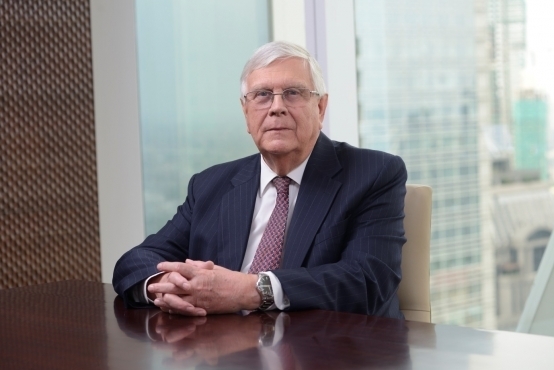echo
 Dec
2017
Dec
2017
The construction industry is changing also, such as the introduction of building robots and the recent application of Building Information Modelling (BIM). In BIM, the process gets the industry to operate in a more collaborative long-term basis, to become more productive and innovative, while improving consistency and reliability. Clients are looking for a higher ROI through a more seamless process from concept to completion, and better cooperation through different construction stages. In the past, and today, projects too often go over time, over budget and lack efficiency. Without embracing needed changes, the industry's long-term future will be bleak.
It is clear that urban centers, especially large ones and megacities, are global hotspots and, in several, such as Delhi, the ambient temperature has noticeably increased over the past decade or so. Apart from improving the quality of structures, to which plantings can be added, greater attention has to be paid to the outside living space and increasing "greening" endeavors. Carefully crafted park and leisure space are essential for the large urban populations of today.
The global population is going to increase by nearly two billion by the turn of the century, and the challenge for every major country will be large. In Indonesia's case, the additional number of urban citizens by mid century is estimated to be 90 million, so planning ahead to locate these new urban dwellers will require careful thought.
"Sicinius: What is the city but the people?
Citizens: True, the people are the city"
- Corialanus, Act Ill, Scene I by William Shakespeare
Obviously many existing cities and towns will be expanded to cater for the increase, but there will also be a need to generate many new locations. In all cases planning will have to think to the future structure of employment, taking account of the impact of the new fast changing digital economy and the different forms of employment that will necessarily be generated. It is right that more attention is being paid to encourage the younger generation to take an interest in what is broadly termed "creative industries." Therein lie the opportunities for a range of activities not even considered today.
In summary, it is clear that many different actions are required to be ongoing in parallel and across a range of disciplines, with public and private sector interests at the same time, in order to provide the comfortable and efficient living conditions of the steadily urbanizing 21st century.
Building For Smart Cities
 Dec
2017
Dec
2017
By: Scott Younger
Forbes Indonesia
THE LITERATURE on sustainable development of smart cities is increasing with more focus on reusing solid waste and wastewater as a better use of resources. The diagram from 2004 illustrates the difference between conventional thinking of single use of utilities and that involving reuse and renewable resources. In parallel, there is also a focus on improving energy efficiency. The astonishing improvements in solar energy, both on and off grid, will continue until using solar energy into smart city designs will become automatic. The demand for large centralized power systems, usually involving fossil fuels, will decline.The construction industry is changing also, such as the introduction of building robots and the recent application of Building Information Modelling (BIM). In BIM, the process gets the industry to operate in a more collaborative long-term basis, to become more productive and innovative, while improving consistency and reliability. Clients are looking for a higher ROI through a more seamless process from concept to completion, and better cooperation through different construction stages. In the past, and today, projects too often go over time, over budget and lack efficiency. Without embracing needed changes, the industry's long-term future will be bleak.
It is clear that urban centers, especially large ones and megacities, are global hotspots and, in several, such as Delhi, the ambient temperature has noticeably increased over the past decade or so. Apart from improving the quality of structures, to which plantings can be added, greater attention has to be paid to the outside living space and increasing "greening" endeavors. Carefully crafted park and leisure space are essential for the large urban populations of today.
The global population is going to increase by nearly two billion by the turn of the century, and the challenge for every major country will be large. In Indonesia's case, the additional number of urban citizens by mid century is estimated to be 90 million, so planning ahead to locate these new urban dwellers will require careful thought.
"Sicinius: What is the city but the people?
Citizens: True, the people are the city"
- Corialanus, Act Ill, Scene I by William Shakespeare
Obviously many existing cities and towns will be expanded to cater for the increase, but there will also be a need to generate many new locations. In all cases planning will have to think to the future structure of employment, taking account of the impact of the new fast changing digital economy and the different forms of employment that will necessarily be generated. It is right that more attention is being paid to encourage the younger generation to take an interest in what is broadly termed "creative industries." Therein lie the opportunities for a range of activities not even considered today.
In summary, it is clear that many different actions are required to be ongoing in parallel and across a range of disciplines, with public and private sector interests at the same time, in order to provide the comfortable and efficient living conditions of the steadily urbanizing 21st century.
More Articles
- Nudging Forward on Transportation and Water Infrastructure
- Jakarta Infrastructure the Future
- Railways of the Future 2012
- Renewables and Sustainable Development
- The Future of Infrastructure and MP3EI 2012
- A Better Year for Infrastructure
- Challenges to the Delivery of the Six Corridor Development Plan
